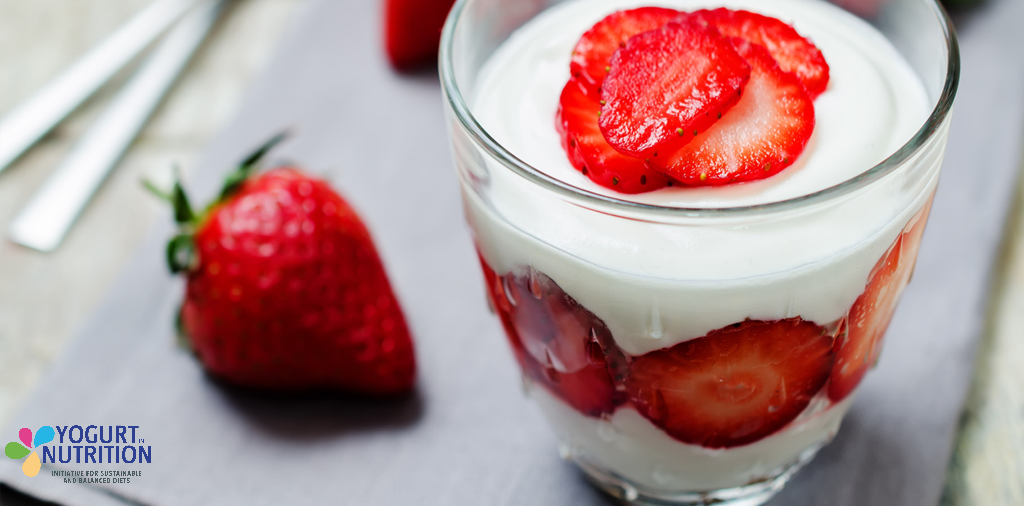Fatty foods are bad and we should avoid them, right? Well, not necessarily, scientists say. It all depends on the type of food, recent evidence suggests (1). While some foods high in saturated fats are associated with increased risk of heart disease and diabetes, others buck the trend. These include certain dairy foods, and eating yogurt is even associated with a reduced risk of these life-threatening diseases.
Some high-fat foods don’t show the expected effects
Heart disease, stroke, and other cardiovascular diseases (CVD) remain the biggest cause of death across Europe, while numbers of people with type 2 diabetes (T2D) continue to spiral upwards.
Experts have long held the view that saturated fatty acids (SFAs) in our diet are partly to blame for the alarming toll these conditions take, and dietary guidelines have advised restricting foods high in SFAs which can lead to raised cholesterol and clogged blood vessels. This can mean cutting down on some of our favourite foods – including dairy foods as these are one of the main sources of SFAs in Western diets.
But now scientists are challenging the established view that all foods containing SFAs are bad, following the discovery that, for dairy foods at least, studies have failed to show a consistent association with risk of either CVD or T2D. And now evidence is emerging to help explain why dairy foods don’t have the expected effects.
People who regularly eat yogurt have a reduced risk of diabetes
In a review of recent clinical trials, researchers found strong evidence that regularly eating yogurt is associated with a reduced risk of T2D. On the other hand, eating cheese seems to have either no effect or a negative effect on the risk of T2D (2).
In fact, an analysis of seven clinical studies on fermented dairy products reported that eating yogurt was associated with a 27% reduction in the risk of T2D. However, in three of these studies eating cheese was associated with a 24% increase in the risk of T2D (3).
Eating dairy food is not associated with an increased risk of CVD
Recent clinical studies have also shown that increasing the amount of dairy food we eat isn’t associated with a danger to our heart health.
For example, one major study looked at dairy food consumption and CVD risk in over 100,000 people aged 35–70 years across five continents. After 9 years, the study found that eating more than two daily servings of dairy food was associated with a 23% lower risk of CVD death and a 22% lower risk of major CVD events such as heart attack or stroke than eating no dairy food (4).
In this study, eating more milk and yogurt, but not cheese, was associated with a reduced risk of CVD-related ill health and death.
The effects of saturated fatty acids can depend on the food source
Latest research has suggested that these health risks are influenced by the food providing SFAs. An analysis of over 100 clinical studies revealed that, whereas eating red and processed meat was associated with an increased risk of coronary heart disease, heart failure, and stroke, no such association was seen with eating dairy food (5).
Scientists don’t yet understand why these differences exist but they suspect several mechanisms may be at work:
- The dairy food matrix may play a key role – the physical structure of a specific food and the way its molecules interact can change the effects of nutrients by influencing the way we digest and absorb them from the food. This may include reduced fat absorption (6).
- Saturated fatty acids can stimulate ‘good’ as well as ‘bad’ cholesterol – so the healthy effects of HDL cholesterol counter-balance the unhealthy effects of LDL cholesterol.
- Saturated fatty acids found in dairy foods tend to increase large particles of cholesterol, which are less associated with CVD risk than small particles.
- The proteins in dairy food have blood pressure-lowering effects, which may help to balance out any increased CVD risk from saturated fatty acids.
- The live cultures present in fermented dairy foods such as yogurt may also contribute to their beneficial effects on CVD and T2D risk.
‘Overall, dairy foods have either a neutral or beneficial association with CVD and T2D. Beneficial associations are seen for blood pressure and the reduced T2D risk linked to yogurt consumption.’ – Givens DI, 2023
Find out more: read the original article.
Additional references:
- Guo J, Givens DI, Astrup A et al. (2019) The impact of dairy products in the development of type 2 diabetes: where does the evidence stand in 2019? Adv Nutr 10, 1066–1075.
- Companys J, Pla-Pagà L, Calderón-Pérez L et al. (2020) Fermented dairy products, probiotic supplementation, and cardiometabolic diseases: a systematic review and meta-analysis. Adv Nutr 11, 834–863.
- Dehghan M, Mente A, Rangarajan S et al. (2018) Association of dairy intake with cardiovascular disease and mortality in 21 countries from five continents (PURE): a prospective cohort study. Lancet 392, 2288–2297
- Bechthold A, Boeing H, Schwedhelm C et al. (2019) Food groups and risk of coronary heart disease, stroke and heart failure: a systematic review and dose–response meta-analysis of prospective studies. Crit Rev Food Sci Nutr 59, 1071–1090.
- Why are scientists so intrigued by the food matrix? – BBC Food



